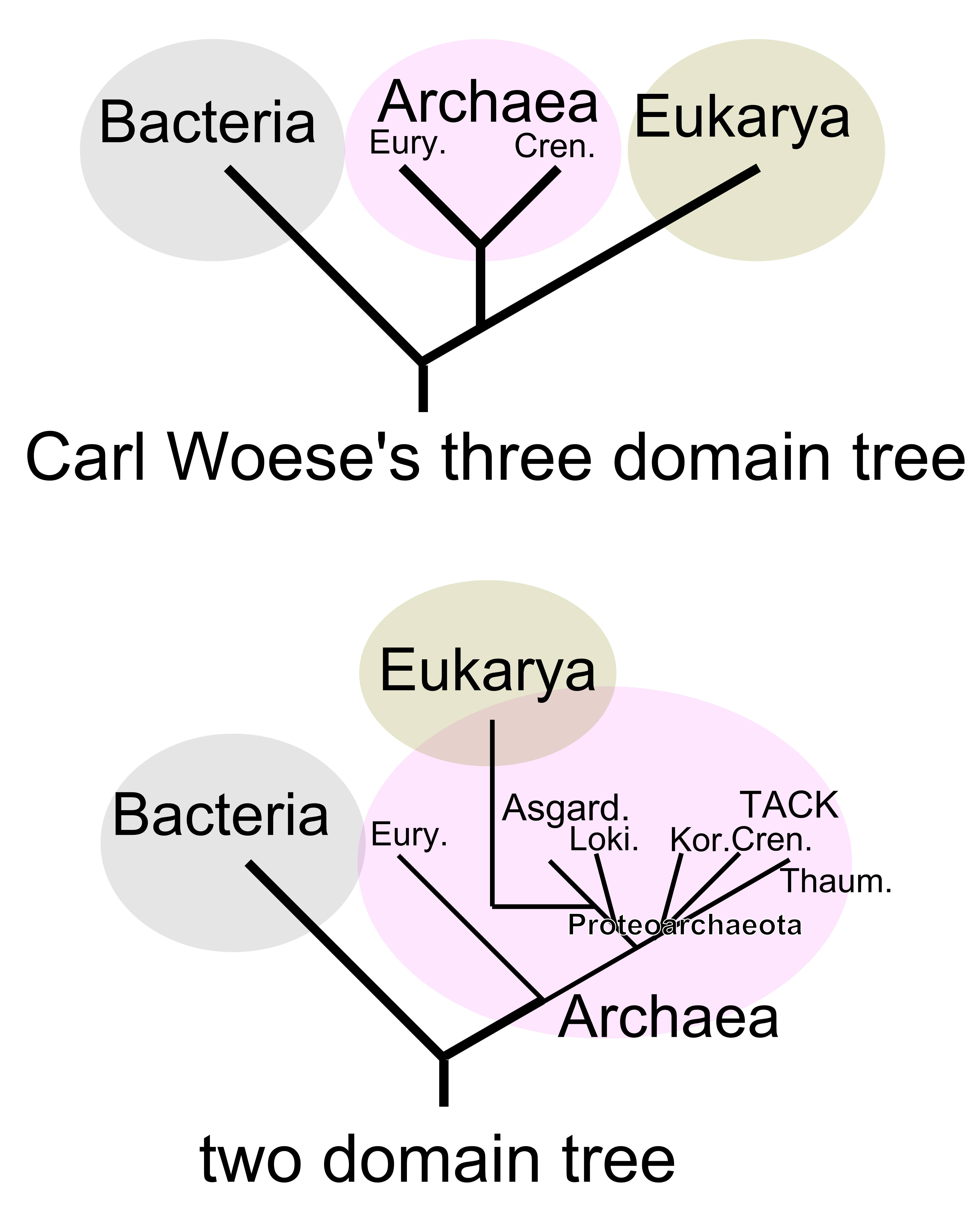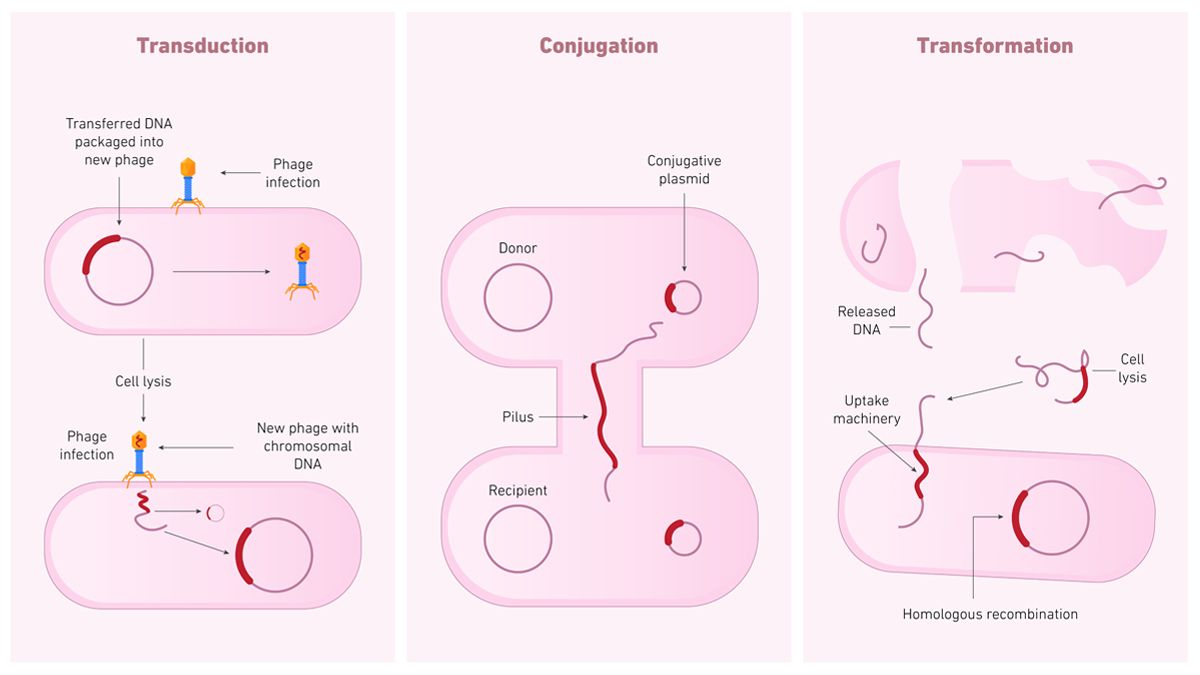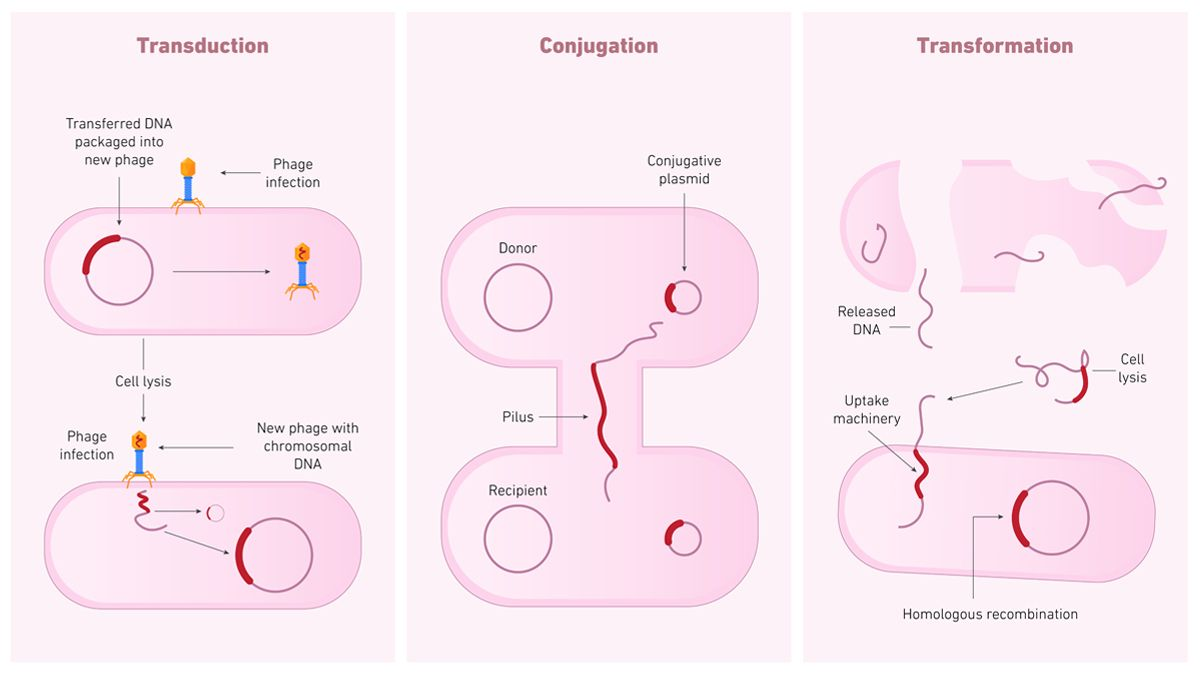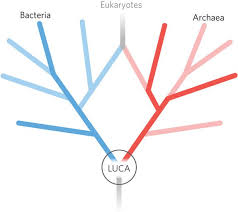Lab 2 - Introduction to Bacteria and Archaea
1/22
Earn XP
Description and Tags
textbook Ch 24
Name | Mastery | Learn | Test | Matching | Spaced |
|---|
No study sessions yet.
23 Terms
3 domains of life
Bacteria, archaea, eukarya
bacteria and archaea are prokaryotes, but they are not each others closest relatives (archaea and eukarya are sister taxa)

microbe
a microscopic organism (of any domain)
prokaryotic vs eukaryotic genome size
eukaryotic genome >> prokaryotic genome
two domain hypothesis
the two domains are bacteria and archaea
eukaryotes are a subgroup of archaea, are sister to some (but not all) archaea

3 common morphologies of bacteria and archaea
coccus (spherical)
bacillus (rod shaped)
helical/spiral (elongated spiral)

how do most bacteria reproductive?
asexually, by binary fission
chromosome is replicated so that the daughter cell is genetically identical to the parent
what three components drive metabolism?
energy source: light (phototrophy) or chemical rxns (chemotrophy)
electron source: inorganic or organic compounds that act as oxidizers
carbon source: inorganic compounds (like CO2) or organic compounds (like sugars)
lithiotrophs vs organotrophs
lithiotrophs: use inorganic electron donors like H2S
organotrophs: use organic electron donors like CH4
autotrophs vs heterotrophs vs carbon fixers
autotrophs: use inorganic carbon
heterotrophs: use organic carbon
carbon fixers: use CO2 from the atmosphere (like plants)
syntrophic networks
the biochemical reactions driving metabolism are connected/coupled
ex. In hot springs, one layer of the biofilm is bacteria that produce CO2 and H2 and the other layer is archaea that uses those products to produce methane
extremophiles vs mesophiles
extremeophiles: thrive at extreme environmental conditions (very hot/cold, very acidic/basic, etc)
mesophiles: live at more normal conditions
vertical transmission
the passing of genes from parents to descendants
lateral gene transfer (LGT)
the mixing of DNA from different lineages
occurs through:
Transformation
Conjugation
Transduction
mechanisms of LGT: transformation
DNA foud in the environment is moved into an intact cell via crossing over (replacing a portion of DNA), direct insertion (adding new DNA), or stays as a separate replicating entity (like a plasmsid)

mechanisms of LGT: conjugation
the replication and transfer of a plasmid (a small piece of DNA) between cells via the formation of a sex pilus
does not result in offspring

mechanisms of LGT: transduction
the incorporation of DNA into a host through viral particles via incorporation into host’s chromosome or replication as a separate entity

pure culture
a culture that only contains a single species
difficult to grow: must replicate the exact environmental conditions, nutrients, and ecological interdependencies
culture independent DNA studies
extracting genetic material directly from the environment and identifying microbes using their nucleotide sequences
metagenomics
sequencing the whole genome to make predictions about the metabolic functions occuring in uncultured organisms
metabolism
the process of acquiring energy, transferring electrons, and transforming carbon compounds into other biomolecules
how do the metabolisms of prokaryotic vs eukaryotic organisms differ?
prokaryotes have a wider range of metabolic processes than eukaryotes
LUCA
Last Universal Common Ancestor
the most recent common ancestor of all life

vertical inheritance
inheritance from a common ancestor